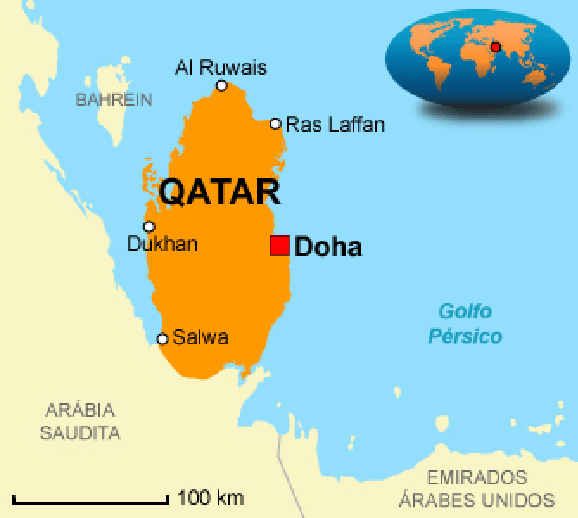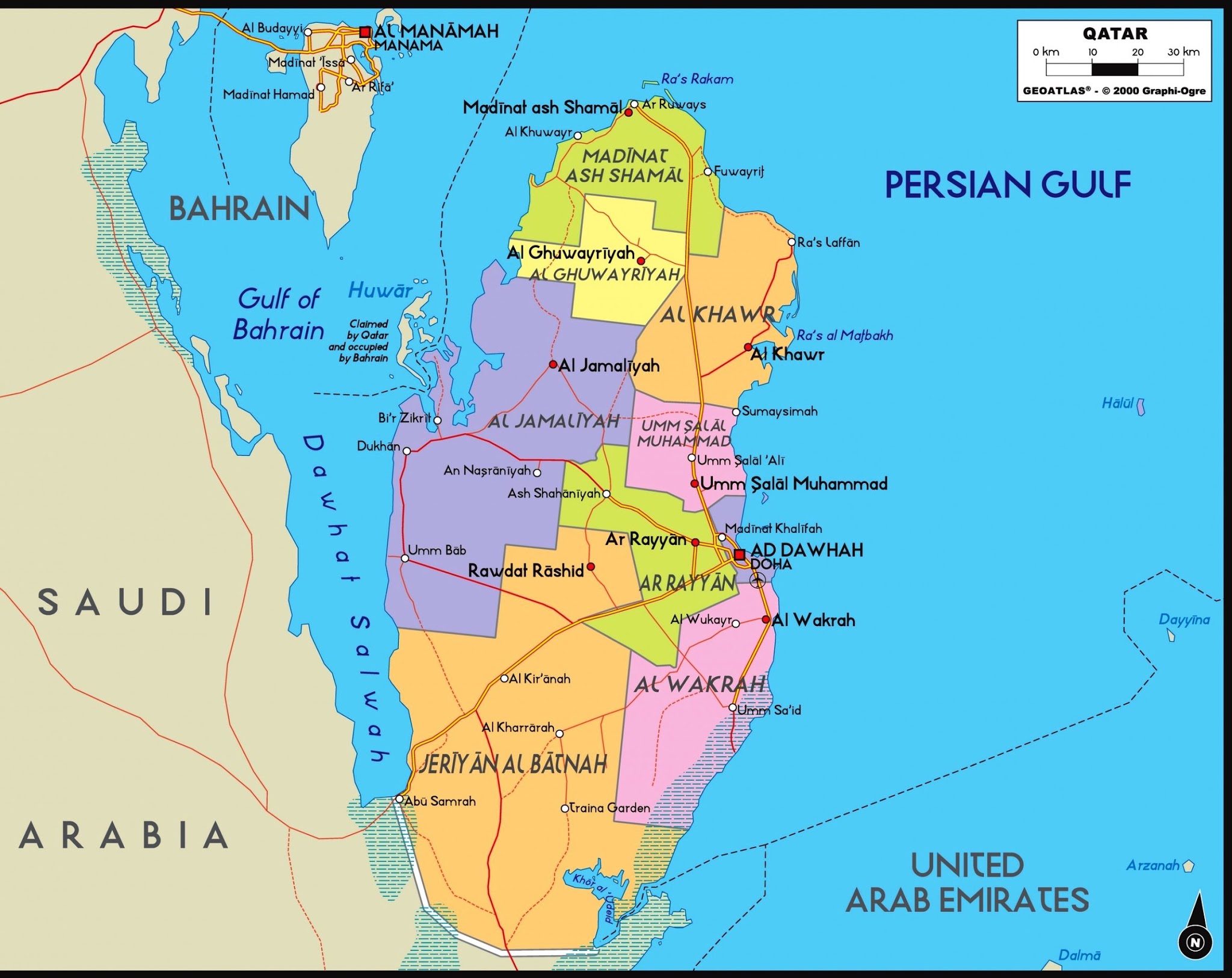Introduction
Nestled on the northeastern coast of the Arabian Peninsula, Qatar is a small yet remarkable nation known for its modern skyline, rich cultural heritage, and strategic geopolitical significance. In this comprehensive guide, we delve into the maps and facts of Qatar, exploring its geography, history, economy, and cultural landmarks.

Geography of Qatar
Situated in the Arabian Gulf, Qatar is a peninsula bordered by Saudi Arabia to the south and surrounded by the Persian Gulf. With a land area of approximately 11,586 square kilometers, Qatar is primarily composed of flat, barren desert terrain, punctuated by coastal mangrove forests and salt flats. The capital city, Doha, lies on the eastern coast, overlooking the glistening waters of the Gulf.
Political Map of Qatar
Qatar is divided into eight municipalities, each with its own distinct characteristics and administrative centers. These municipalities include Doha, Al Rayyan, Al Daayen, Al Wakrah, Al Khor, Al Shahaniya, Umm Salal, and Al Shamal. Doha, the capital and largest city, serves as the economic, cultural, and political hub of the nation.
Historical Landmarks
Qatar boasts a rich heritage dating back thousands of years, evidenced by its archaeological sites, museums, and historical landmarks. Visitors can explore the ancient ruins of Zubarah, a UNESCO World Heritage Site that offers insights into Qatar’s maritime history and pearl trading era. Additionally, the Museum of Islamic Art in Doha showcases a stunning collection of Islamic artifacts, spanning centuries of art and culture.
Economic Profile
As one of the wealthiest countries in the world, Qatar’s economy is primarily driven by its vast reserves of natural gas and oil. The nation has diversified its economy in recent years, focusing on sectors such as finance, tourism, and infrastructure development. Doha’s modern skyline is a testament to Qatar’s ambitious urban development projects, including the iconic skyscrapers of West Bay and the futuristic Lusail City.
Cultural Diversity
Qatar’s population reflects a rich tapestry of cultural diversity, with a mix of indigenous Qataris and expatriate communities from around the world. The nation celebrates its cultural heritage through festivals, traditional music, and culinary delights. Visitors can experience Qatari hospitality firsthand at local souqs, where they can sample traditional delicacies, shop for handmade crafts, and immerse themselves in the vibrant atmosphere.
Environmental Conservation
Despite its rapid urbanization and industrialization, Qatar remains committed to environmental conservation and sustainable development. Efforts are underway to preserve the nation’s natural habitats, protect endangered species, and promote renewable energy initiatives. The Ras Abrouq Nature Reserve and Al Reem Biosphere Reserve are among the protected areas where visitors can admire Qatar’s diverse flora and fauna.
Conclusion
From its modern metropolis of Doha to its ancient archaeological sites and pristine desert landscapes, Qatar offers a wealth of experiences for travelers and enthusiasts alike. This comprehensive guide has provided insights into Qatar’s geography, history, economy, and cultural landmarks, inviting readers to explore the fascinating tapestry of this dynamic nation on the Arabian Peninsula.
- 7 Reasons Why Rome Fell - July 26, 2024
- 7 Interesting Facts About Ancient Greece - July 26, 2024
- East African Countries - July 19, 2024




